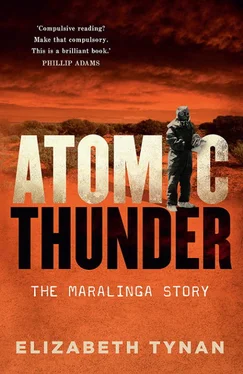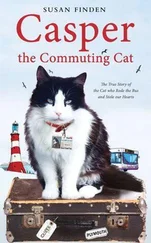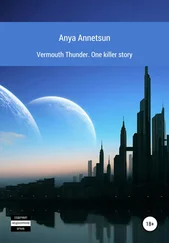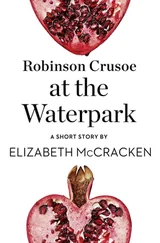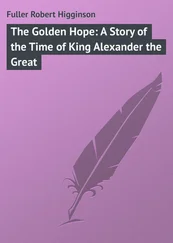The report criticised Titterton to such an extent that it led to suspicions that the process was a political witch-hunt. Academic Graeme Turner described the Royal Commission as ‘a spectacle of national revenge’. If this was so, the focus for much of the revenge seemed to be on one of its most prominent participants. An account of Titterton’s career written two years after his death by John Newton told a somewhat more sympathetic story. In disputing the criticism contained in the commission’s report, Newton said, ‘The statement that Titterton was “from first to last, ‘their man’” rejects any other interpretation of his actions. It appears contrary to the attitude that the Commission adopted in other cases’.
ANU colleagues, many of whom knew Titterton well, consistently defended him, while acknowledging his shortcomings. Trevor Ophel observed that ‘rarely has it been more evident that the past is the proper territory of thoughtful historians. Hindsight, conditioned by political and scientific changes evolving over a thirty year period, cannot and should not be used to judge the past’. Ophel noted that Titterton had been ‘accused of near treason’ by the Royal Commission. It is striking to see how far his reputation deteriorated, from respected scientist and confidante of the British nuclear weapons establishment to Australian pariah.
Nevertheless, a certain relish for the battle can be detected in McClelland’s description of Titterton in the witness box ‘as a sort of Dr Strangelove figure. So gung-ho about all things nuclear that he gave me the impression that radiation was nothing to worry about and could almost be considered good for people’. Years after Titterton’s death, McClelland’s assessment of the former head of the safety committee had not softened; he said Titterton was ‘totally obsessed with nuclear physics’.
Robert Milliken noted that at the time of the Royal Commission, Titterton and McClelland ‘were then aged 69, robust, vain and possessors of particularly sharp and competitive minds’. They were bound to clash, he asserted, because they were so similar.
Whatever the rights and wrongs of the case against Titterton in the Royal Commission, the man certainly made a strong impression on people. Nearly everyone who came into contact with him had a story to tell, not all of them flattering. The overall impression from the many accounts is that Titterton was larger than life, an insensitive and opinionated man with considerable intellectual snobbery who crashed through any barrier. Sometimes he crashed through physically. ARPANSA scientist Peter Burns told of working for the AWTSC in an office next to the front door, ‘and you would know when Titterton had arrived because the front door would rocket back on its hinges and smash against the back wall, and he would stomp up the stairs snivelling and snorting. At the end of the day he would stomp down the stairs and smash the door open to make his exit’. He was well known for his pettiness, refusing to install a light in the nuclear physics laboratory ‘on the grounds that someone might sit there and read the newspaper’, said Newton. Rather than giving away the produce of his home garden, he sold his tomatoes and lettuces to colleagues. This man had once been in charge of the flow of all atomic test information from the British to the Australian Government. As Peter Burns put it, ‘He knew all the British weapons people and they told him what they were doing and he told the Australian Government that it was all right. A lot of information closed off there’.
William Penney maintained later that the safety committee was not denied important information. His statement to the Royal Commission said that, in his experience:
no information pertinent to the possible effects of the explosions on the Australian people was withheld. Design details of the weapons were not given for two reasons. One was simply the expressed policy of the Australian Government not to become a party to such information nor to become a nuclear weapon state. Secondly, the UK then as now, was obligated not to release to a third party certain information entrusted to it by the Americans. This did not preclude the Australians from receiving military and civil defence information about the effects of atomic weapons nor from participating in measurements to that effect.
In some ways, the diffidence shown by the Australians – on the one hand actively seeking to be party to the information yielded by the British tests while on the other kowtowing before the British secrecy agenda in the most abject way – did make for a confusing set of messages. Australia did, for a while at least, want to be a nuclear nation, and it wanted to know what the British discovered. The government hoped that if it supported the trials with money and other resources, the British would share this scientific information. The British never thought the same thing, perhaps because the Australians were not upfront about what they wanted. Perhaps, too, the wall created by Titterton was too high for the Australians to climb over.
The AWTSC was formed on 21 July 1955, during the preliminary surveying and commissioning of the Maralinga test range. It arose from discussions between Prime Minister Menzies, Minister for Supply Howard Beale and Minister for Defence Sir Philip McBride. The committee’s role was always ambiguous. The British test authorities did not seek its formation. Rather, the committee was set up because the Australian Government wanted to play a distinct part in the tests, to do more than just provide the venue. Ostensibly, the AWTSC was established to evaluate safety aspects of the tests from 1955 onwards, and to act as a conduit between the UK test authorities and the Australian Government. In reality, at least according to some, it did not play a significant role in advising on safety matters. Instead, it provided reassuring window-dressing. The safety committee sought legitimacy for itself in various ways. In October 1958 it published a journal article stating it ‘was responsible for ensuring that chosen firing conditions could not lead to damage of life or property on the continent’.
Significantly, the AWTSC did not get involved with the minor trials and concerned itself mostly with the big bomb tests. John Moroney, its former secretary, confirmed this during his feisty evidence to the Royal Commission. He said, ‘The minor trials were looked at in the light of the adjective [minor]’. A change occurred later, he asserted, when ‘the minor trials ceased to be minor’, because of the use of plutonium-239 in Vixen B.
The committee reported to the prime minister, through the minister for Supply. Menzies, in a letter to his minister for Civil Aviation (later Defence minister) Athol Townley in May 1955, specifically requested that the new safety committee ‘include members who are sufficiently well-known to command general confidence as guardians of the public interest, and who are not in any way to be identified as having an interest in the defence atomic experiments’.
Right from the start, Australian access to the scientific knowledge bonanza arising from the bomb tests was politely but firmly deflected. Before he formed the AWTSC, Leslie Martin, as defence scientific adviser, was granted some access to Hurricane, on strictly limited terms. The British, while on the surface agreeing to share some information, were rather passive aggressive in denying that information. The Australians tiptoed around gingerly, not daring to suggest access to anything more than peripheral facts. They knew that Titterton was on the inside, as a letter from the chief of naval staff to the Defence secretary Sir Frederick Shedden showed: ‘As you know Dr. Titterton is attending apparently by private arrangement’.
Whether Martin and Butement could also be involved was the subject of considerable discussion, and the British High Commission in Canberra stalled on making a decision. A draft Australian Government letter to be sent to the High Commission to try to clarify the situation pushed for the inclusion of Martin, because of
Читать дальше
